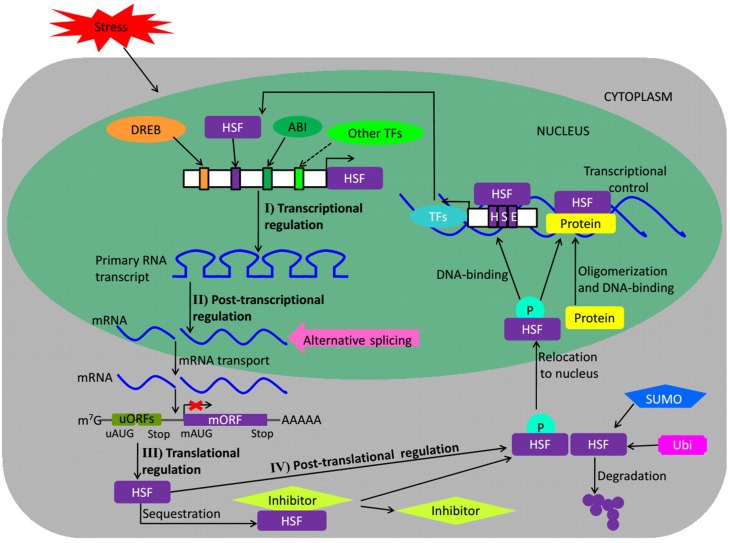Figure 2.
Regulation of HSF proteins. The scheme depicts the regulation of HSFs at different levels during stress. Upstream TFs like DREB, HSF, or ABI may bind to stress-related cis-regulatory elements in the promoter of regulated HSF genes and influence their transcription. Post-transcriptional control of HSFs by alternative splicing may also regulate their expression. The mature mRNAs are again governed during their transport and translation. uORFs regulate HSFs at the translation level. The translated protein may be subjected to activation by phosphorylation or undergo SUMO- and ubiquitin proteasomal-mediated degradation in response to certain environmental cues, other translated HSF proteins may be sequestrated by their inhibitors. Upon their nuclear import, the activated HSF proteins homo- or heterodimerize or bind to promoters of their target genes to control their expression. Broken arrows indicate possible but not firmly demonstrated routes. The red X mark represents translational repression. DREB, dehydration responsive element binding protein; ABI, ABSCISIC ACID–INSENSITIVE protein; TFs, transcription factors; AS, alternate splicing; mRNA, messenger RNA; m7G, cap of mRNA; uORFs, upstream micro open reading frames; mORF, major ORF; uAUG, AUG of uORF; mAUG, AUG of mORF; P, phosphate; SUMO, small ubiquitin-like modifier; Ubi, ubiquitination; HSE, heat stress element. (Adapted from Calkhoven and Ab, 1996; Puranik et al., 2012).

